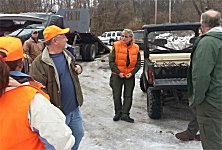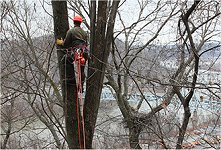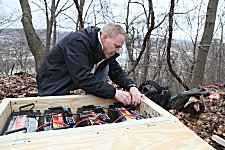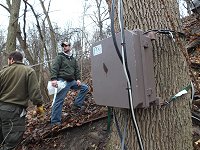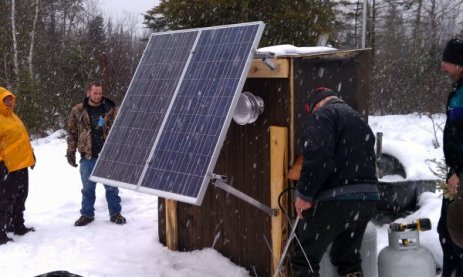Since we broadcast our first wildlife webcam in 2004 we have continually developed new technologies to bring unique wildlife species into homes and schools all over the world. Below are a list of some of our more notable wildlife projects and the technology used.
Multiple Motion-Activated Live Webcam
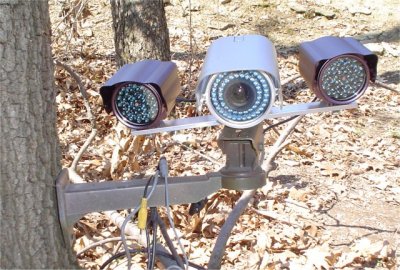
This was our very first webcam project that was developed over a few years time. This camera was a first of its kind. This camera system included a main camera that was broadcasting all the time and (4) other wireless webcams in remote areas that were within 1/2 mile from the main camera. The wireless camera were motion activated and if an animal was in front of them the main view would switch to the wireless camera view. When the animal left the view would switch back to the main camera. Camera viewers never knew what they might see. This camera system was awarded the 2007 World’s Most Interesting Webcam award by EarthCam.

What made this camera system truly unique is that we have designed a custom proprietary set of electronics, “base station”, that allow us to integrate motion-activated, battery operated, remote camera units out in the filed. These remote cameras will turn on when an animal walks in front of them and transmit a video signal back to our base station. Once the base station senses this incoming video signal it will switch off the video feed from the main camera and start broadcasting the feed from the remote camera unit. Once the animal leaves the remote camera site the feed will switch back over to the main camera.
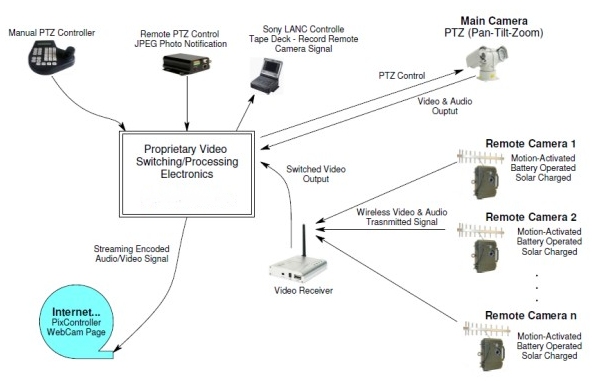
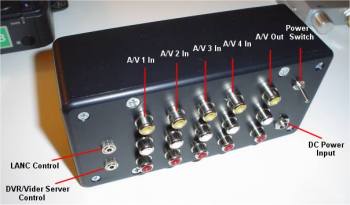
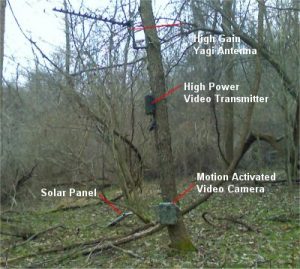
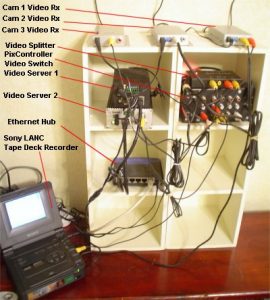
Dual View Bird Box Camera - Inside/Outside Cams
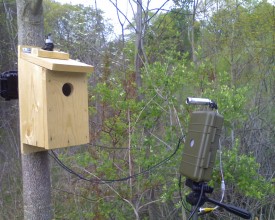
When watching bird box webcams viewers often wonder what is going on outside the box. We solved this problem by added an external outside camera to view birds when the were at the opening. If a bird was at the opening the inside camera would switch to the outside camera view for as long as the bird was at the opening. Then the camera would switch back to the inside view. The external camera contained a custom designed motion sensor that would perform the switching between the two cameras.
Example Video of Bluebirds Building a Nest
Example Video of Bluebirds Hatching
Black Bear Den Camera
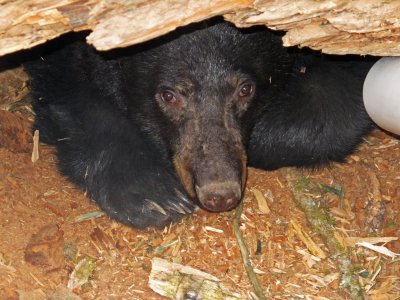
The “Lily Bear” webcam made International news in 2010 when we broadcast the birth of a black bear live to over 50,000 viewers. This was the first time the public and researchers witnessed this view of a wild black bear birth from a den site. The camera was featured on the NBC Today Show twice among many other new outlets.
This is first ever streaming live webcam with audio & video installed in an active black bear den. The site of this den is near Ely, MN and about 30 miles south of Canada.
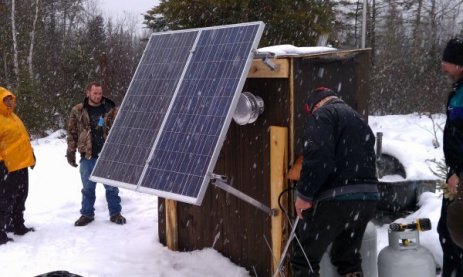
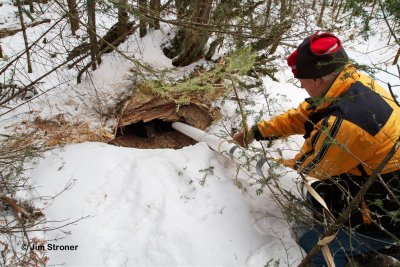
Eastern Screech Owl Research Project
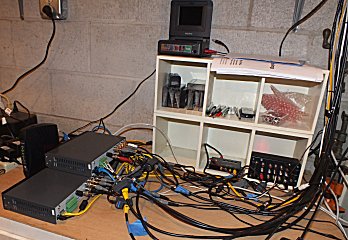
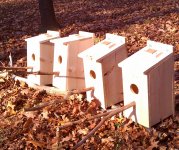

The purpose of this site is to study the Eastern Screech Owl behaviors during the winter roosting and spring nesting periods. The winter roosting period is typically between October to March, and the nesting period from March to June. During the fall of 2011 we discovered an Eastern Screech owl roosting in one of the nest boxes we had put up. We quickly installed a webcam into the box to watch the owl. On advice from local screech owl expert, Dick Byers, we installed several more owl boxes in the same area and started a study to monitor their behaviors. Although screech owls are fairly common little is known about their behaviors since they are nocturnal.
In our study we fitted nine artificial owl boxes with a small infrared video camera and a small audio MIC. The video cameras used were 1.20” in diameter and 4” long and include (8) infrared LED’s which produce an infrared illumination source in the 940nm range, which do not emit any visible red glow.
The screech owls will use the boxes during the day to roost and leave at night to go hunting. We will try and use the external PTZ camera to locate the owl at night hunting if in the range of the owl boxes. During the day we will position the PTZ camera on the box the owl is roosting in. When the owl roosts in the morning it will sit at the opening of the owl box for 1/2 to 1 hour before going in to roost for the day. Before the owl leaves the owl box at night it will sit at the opening for 1/2 to 1 hour before leaving. The PTZ camera will give you an outside view of the owl during these times.
Winter Roosting Activity
Screech owls do not migrate; they maintain home ranges throughout the winter. During they day light hours the owls will find a roosting location and will roost until dark. The winter roosting time period is typically between October to March. Screech owls are primarily solitary except during the breeding season. Pairs occasionally roost together during the winter in hollow trees, nest boxes, and trees with dense foliage. The cameras enable us to view the activity inside the owl box and outside the owl box with the PTZ camera. During the day the owl boxes are often mobbed by song birds and occasionally bothered by gray squirrels.
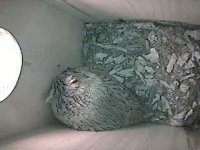
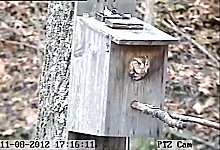
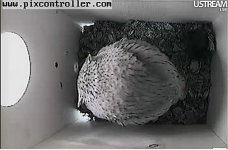
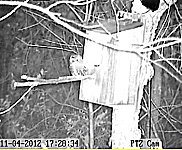
Caching of Prey
It is a well known fact that screech owls will cache uneaten prey items in cavities. We were surprised at the number of different species cached and how long the prey items remained in the owl boxes before being consumed. The most interesting item was a wood frog (see below) which was cached on the evening of December 24th when the air temperature was only 30 deg. F. The frog was consumed over a 2-week period in stages over multiple night feedings, and was totally consumed on January 7th, 2012.
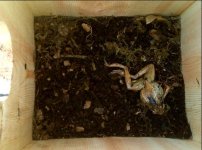
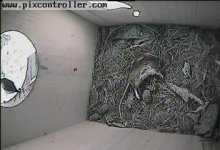
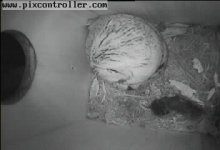
Box Visitors
The owl boxes do get the occasional visitor such as gray squirrels and Carolina wrens during the day and flying squirrels at night. We have observed unusual behaviors such as flying squirrels eating cached prey by the screech owls.
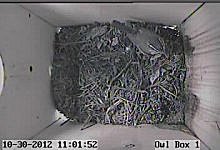
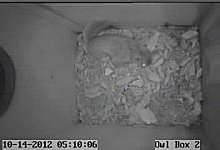
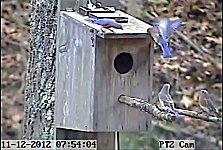
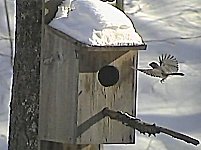
Courting and Nesting
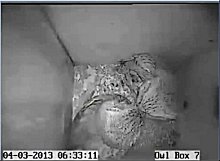
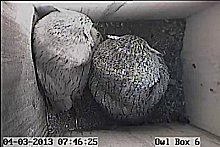
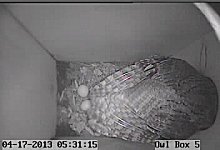
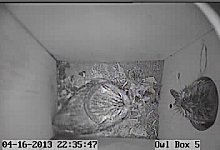
Pittsburgh Hays Bald Eagle Webcam
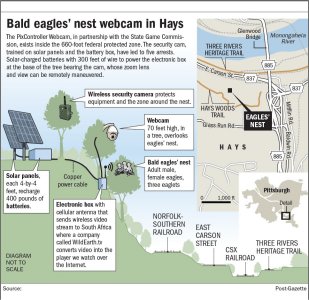
The Hays bald eagles are the first nesting pair of bald eagles in Pittsburgh in nearly 250 years. They first nested near Pittsburgh in 2013 and we installed the first ever camera on a Pennsylvania bald eagle nest in 2014. The nest is 5 miles of downtown Pittsburgh, Pennsylvania along the Monongahela River near where the famed Carnegie Steel Homestead site once existed. Industrialization beginning in the 19th century led to extensive unregulated pollution of the rivers, which decimated fish populations that eagles feed on. For example, during a survey on Monongahela River in 1967, one scientist could find only one bluegill. As efforts to clean the waterways took effect over the past 30 years, 76 species of fish have been found in the Monongahela.
This webcam is a pilot project with the Pennsylvania Game Commission which required a vast amount of work with the landowner, commission, and biologists to make this a reality. The camera system was installed on December 20, 2013. Ten Pennsylvania Game Commission conservation officers transported and install the camera equipment with our
The camera system is a unique system which was custom designed and manufactured by PixController, Inc. The camera video feed is streamed over Verizon Wireless 4G LTE cellular network. Verizon has donated the data plan and bandwidth to stream the video signal and their partner, Sierra Wireless donate the 4G Gateway for the project. The video stream host and player is provided by WildEarth.tv from South Africa. Because the system is installed in a remote location the system is powered by a battery bank, which was supplied by Interstate Batteries, and is solar charged. This is truly a team effort by many people to bring this video feed to you.
The camera is a Pan-Tilt-Zoom camera with built-in IR illuminators for night time illumination. The camera is mounted in a tree about 30 yards from the nest site with a view down into the nest. We can remotely move and zoom the camera and follow the eagles. During the day the video will be broadcast in color and during the night the video will switch over to black & white. We remotely monitor the battery power and site security via M2M (machine to machine) devices designed by us to keep the video feed streaming and secure without the need for human presence.
